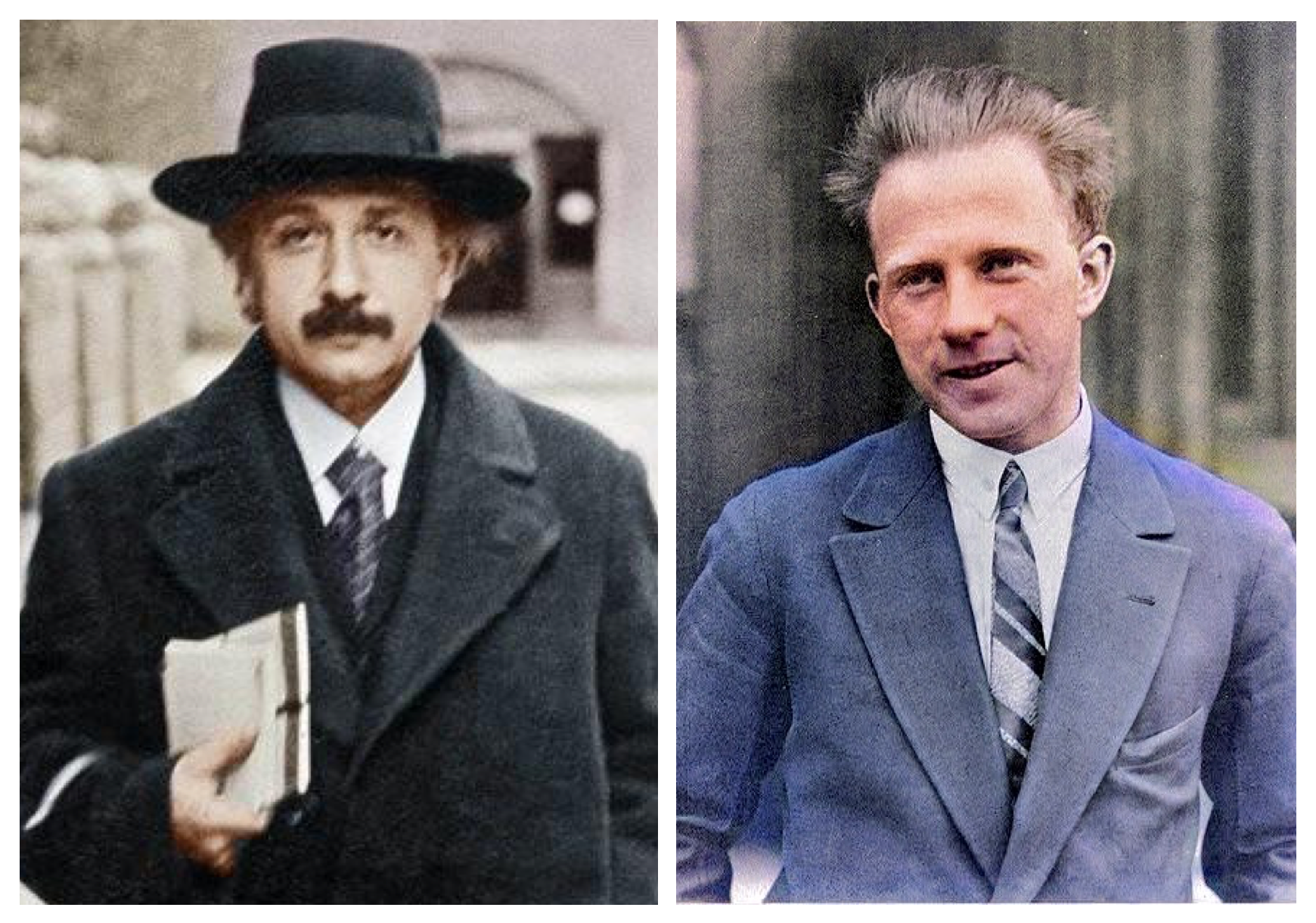Werner Heisenberg is considered a pivotal personality in the evolution of modern physics, primarily known for his groundbreaking contributions to quantum mechanics. The concepts he introduced fundamentally transformed the scientific comprehension of atomic and subatomic domains, establishing a theoretical foundation that continues to be essential in current physics. Examining Heisenberg’s core theories highlights not only their deep scientific importance but also their enduring philosophical influence.
The Principle of Uncertainty
Perhaps the most celebrated of Heisenberg’s contributions is the Uncertainty Principle, formulated in 1927. This principle asserts that there exists a fundamental limit to the precision with which certain pairs of physical properties, known as conjugate variables, can be simultaneously known. The best-known pair is position and momentum. Mathematically, the uncertainty principle is expressed as:
Δx · Δp ≥ ħ / 2
Here, Δx signifies the positional uncertainty, Δp the momentum uncertainty, and ħ (h-bar) denotes the reduced Planck constant. Heisenberg’s discovery challenged the long-held belief—stemming from classical physics—that, with sufficiently sophisticated measuring instruments, every characteristic of a particle could be determined concurrently with absolute precision.
Consider an experimental scenario involving an electron observed through a photon microscope. Increasing the photon’s energy for a sharper image inevitably disturbs the electron’s momentum due to photon-particle interaction, thus amplifying uncertainty in its momentum. Conversely, using lower-energy photons spares the momentum but yields a less precise location measurement. Heisenberg’s principle, therefore, does not merely reflect a limitation of technology, but rather an intrinsic property of quantum systems—the fabric of reality itself enforces this uncertainty.
Beyond its technical consequences, the Uncertainty Principle invites philosophical reflection. It challenges the deterministic worldview upheld by classical mechanics. Heisenberg himself emphasized that the observer and the observed system are inextricably linked; the act of measurement is an active intervention in quantum phenomena.
Matrix Mechanics: The First Quantum Theory
In 1925, at the young age of twenty-three, Heisenberg unveiled Matrix Mechanics, which stood as the initial comprehensive and coherent framework for quantum mechanics. Before this development, quantum theory consisted of a collection of disparate rules put forth by different physicists to explain specific occurrences, including blackbody radiation and atomic spectra. Heisenberg’s methodology fundamentally transformed how quantum phenomena were conceptualized.
Instead of modeling electrons as particles moving in precise orbits (as in the Bohr Model), Heisenberg proposed encoding observable quantities—such as the spectral lines emitted by atoms—as mathematical arrays known as matrices. In this framework, physical properties like position and momentum were replaced with matrices whose elements corresponded to transitions between quantum states.
A defining characteristic of matrix mechanics is the non-commutative property of matrix multiplication; for instance, when multiplying two matrices that denote position and momentum, the outcome is contingent on the sequence of their multiplication. This directly establishes the mathematical basis for the uncertainty principle. Max Born, a colleague of Heisenberg, observed that Heisenberg’s “quantum” values adhered to the principles of matrix algebra, thereby facilitating the development of a structured theory.
This theoretical framework offered a set of tools for precisely determining atomic spectral lines. Heisenberg’s matrices and the notion of quantized observables later emerged as fundamental principles in quantum mechanics, subsequently demonstrated to be mathematically equivalent to Erwin Schrödinger’s wave mechanics.
Heisenberg’s Impact on Quantum Field Theory
As his career advanced, Heisenberg broadened his attention from single particles to the combined actions of multi-particle systems and fields. From the late 1920s onward, he was instrumental in the creation of Quantum Field Theory, especially by striving to comprehend how interactions, including electromagnetic and nuclear forces, function at the quantum scale.
Heisenberg proposed that fundamental interactions should be described by fields quantized in a manner analogous to ordinary quantum mechanics. Collaborating with Wolfgang Pauli, he contributed to the quantization of the electromagnetic field—a milestone underpinning quantum electrodynamics (QED). This formalism extends quantum theory from particles alone to include the fields they interact with, laying the groundwork for the Standard Model of particle physics.
S-Matrix Theory
In the 1940s and 1950s, facing difficulties in characterizing particle collisions and high-energy interactions, Heisenberg focused on creating the S-matrix theory (scattering matrix theory). This methodology aims to connect the starting and ending states of particles during a collision, bypassing the need to detail intricate intermediate interactions.
Heisenberg’s S-matrix theory was especially influential during the formative stages of quantum field theory. It provided an elegant means of extracting observable consequences—such as cross-sections for scattering events—without invoking ill-defined or problematic concepts. Although subsequently superseded by more comprehensive models, the S-matrix approach was foundational to later advancements in both theoretical and experimental particle physics.
Heisenberg’s Non-Linear Spinor Theory
In his quest for a unified field theory, Heisenberg ventured into speculative territory with his Non-Linear Spinor Theory in the 1950s and 1960s. He endeavored to explain the plethora of observed subatomic particles as manifestations of a single fundamental entity governed by non-linear equations. In this vision, protons, neutrons, and other elementary particles would emerge as different solutions to these equations.
Despite the non-linear spinor theory not achieving the experimental triumphs Heisenberg had envisioned, its aspiration for conceptual coherence within particle physics foreshadowed subsequent endeavors, including grand unified theories and string theory. This demonstrated Heisenberg’s persistent determination to explore the boundaries of theoretical physics beyond current understanding.
Philosophical Viewpoints and Enduring Impact
Heisenberg’s theories were not limited to technical advancements; they had profound philosophical implications. He argued that the sharply delineated laws of classical physics were replaced at the quantum level by relationships of probabilities and uncertainties. His writings, especially in works like Physics and Philosophy, expressed a vision of science in which nature’s essence is not always directly accessible, and the questions asked shape the answers received.
The impact of Heisenberg’s ideas extends far beyond theoretical physics. The uncertainty principle, for instance, is often invoked in fields as diverse as information theory, statistical mechanics, and even popular culture as a metaphor for the limits of knowledge. Matrix mechanics and quantum field theory form the mathematical infrastructure of virtually all modern research in atomic, nuclear, and particle physics.
Heisenberg’s oeuvre reflects the fullest embodiment of scientific creativity: a willingness to depart from the comfort of established doctrine in pursuit of deeper, more accurate accounts of nature’s workings. In shaping quantum mechanics’ conceptual foundations and practical tools, he not only explained the mysteries of the atom but also redefined the boundaries of what can be known and measured. This enduring legacy anchors Heisenberg’s place among the great theorists of the twentieth century.



